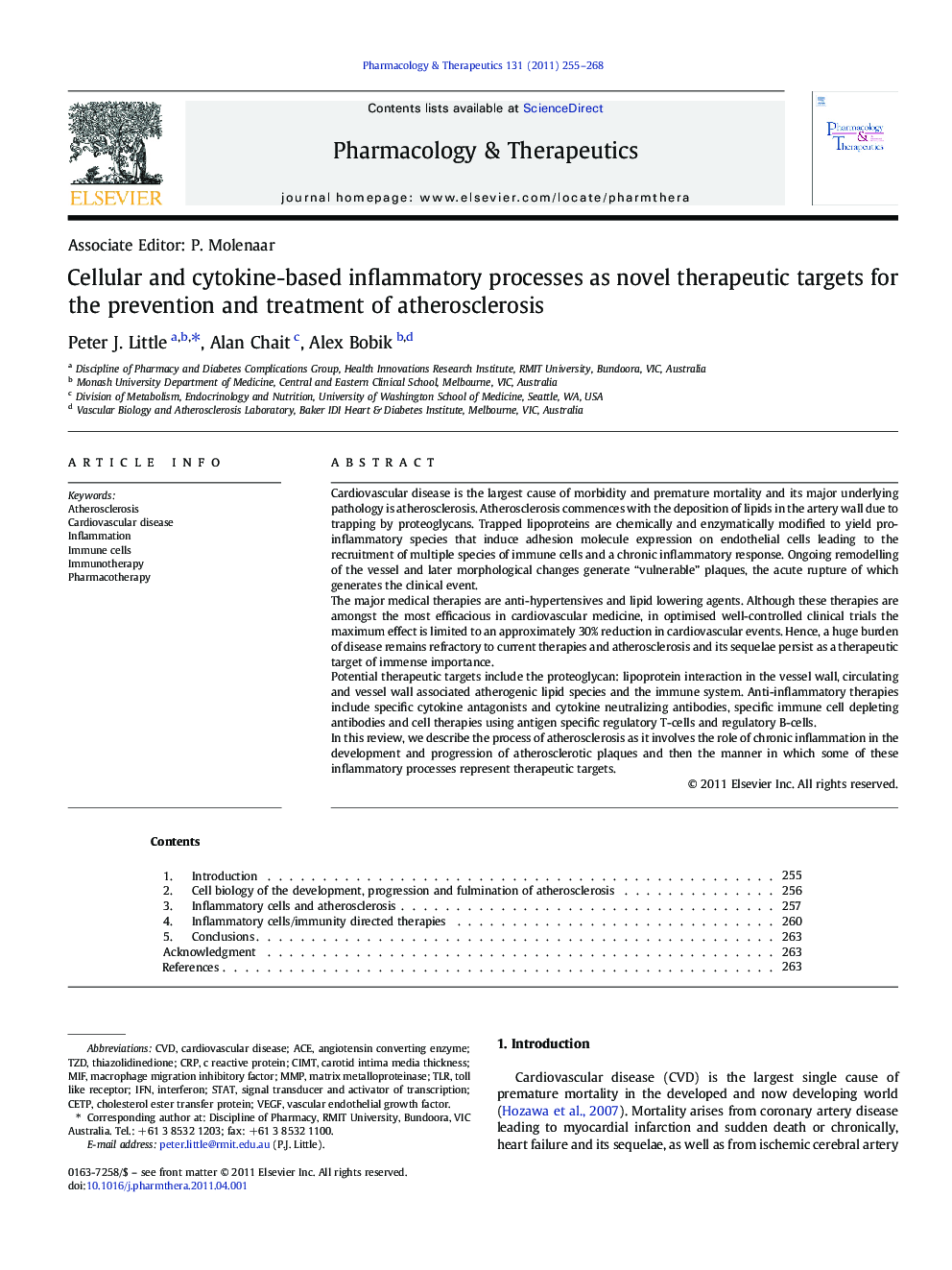| Article ID | Journal | Published Year | Pages | File Type |
|---|---|---|---|---|
| 2563679 | Pharmacology & Therapeutics | 2011 | 14 Pages |
Cardiovascular disease is the largest cause of morbidity and premature mortality and its major underlying pathology is atherosclerosis. Atherosclerosis commences with the deposition of lipids in the artery wall due to trapping by proteoglycans. Trapped lipoproteins are chemically and enzymatically modified to yield pro-inflammatory species that induce adhesion molecule expression on endothelial cells leading to the recruitment of multiple species of immune cells and a chronic inflammatory response. Ongoing remodelling of the vessel and later morphological changes generate “vulnerable” plaques, the acute rupture of which generates the clinical event.The major medical therapies are anti-hypertensives and lipid lowering agents. Although these therapies are amongst the most efficacious in cardiovascular medicine, in optimised well-controlled clinical trials the maximum effect is limited to an approximately 30% reduction in cardiovascular events. Hence, a huge burden of disease remains refractory to current therapies and atherosclerosis and its sequelae persist as a therapeutic target of immense importance.Potential therapeutic targets include the proteoglycan: lipoprotein interaction in the vessel wall, circulating and vessel wall associated atherogenic lipid species and the immune system. Anti-inflammatory therapies include specific cytokine antagonists and cytokine neutralizing antibodies, specific immune cell depleting antibodies and cell therapies using antigen specific regulatory T-cells and regulatory B-cells.In this review, we describe the process of atherosclerosis as it involves the role of chronic inflammation in the development and progression of atherosclerotic plaques and then the manner in which some of these inflammatory processes represent therapeutic targets.
